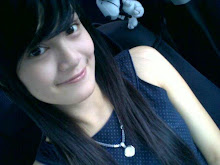
Mention The Doors and people tend to overdraw on Jim Morrison without actively attributing at least some credit for the band’s success to his fellow band members. Whereas Morrison had God-given talent in droves, Ray Manzarek was blessed with immense skill, particular in his avant-garde leanings towards utilising the keyboard as a fiery instrument for rock assault. Morrison’s early death ensured that he would forever steal the spotlight from the other Doors. The fact that most music fans would struggle to name the two albums that the remaining band members recorded after his death speaks volumes for the myth that advocates Morrison was The Doors.
Listen to The Golden Scarab, and you will agree that Ray Manzarek could offer musical work that was just as interesting as Morrison’s, even if the level of charisma on offer was lacking. Where Morrison had dangerous instinct, Manzarek had calculated brains, and yet The Golden Scarab offers a hint that maybe it wasn’t just Morrison who was hung up on preaching whatever pretentious spiritual rambling took his fancy at the time. On first glance, the album is your typical latter-period Doors record – regular motifs such as spoken word introductions feature throughout, along with an overwhelming lyrical fascination for the mystical. Most importantly, however, a strong collection of rock songs is contained, albeit buried amidst off-the-wall production values and indulgent musings. Despite this, repeated lessons to The Golden Scarab will teach you that beneath the mumbo-jumbo aesthetic lies a worthier album than most Doors / Morrison fans will admit to.
Hopelessly naïve in places in its dated mysticism, you’d have strong reason to claim, in an ironic way, that Manzarek’s spiritual vision on the album was tainted purely by the fact that his musicianship was too strong. It’s as if the melodic hooks and killer-choruses somehow made their way into the song structures and that this wasn’t the original Manzarek master-plan. Another major factor corroborating the notion that The Golden Scarab is musically strong is the quality-driven session musicians Manzarek enlisted as his new ‘recording band’. Forever Changes-producer Bruce Botnick oversaw the album’s production with assured confidence, helped by impeccable guitar-work from Larry Carlton and slick drumming from Tony Williams.
Somehow, the album survives despite overt pandering to fourth-dimension conscious-thought. The introduction to second song has Manzarek’s spoken-vocal delivering “And myself said to me ‘Why are you waiting? I’ve always been at your side, can’t you see me? No? Well, then come with it’s time you lean to see!’“ When Morrison spouted nonsense such as this we forgave him because he always danced on the dark side; his unpredictability lead to a sense of incoming alarm at any moment. Manzarek doesn’t earn as much forgiveness with this assumed-narrator persona, and yet we quickly forget the leftfield cosmic framings the minute we hear stand-out song The Solar Boat. This second song off the album begins stark and intense, and then casually slips into a strong chorus, which even pays lyrical homage to doors with its “Let’s take a Moonlight Drive” lyric. It’s a strong follow-up to opener He Can’t Come Today, Maybe Tomorrow, which takes a space rocket through many unrelated musical genres before settling on a blues-rock chorus; the lyrical call for a religious leader seems lost amongst a song this melodic.
Soaring through Chuck Berry cover Downbound Train and even glam-rock synthesiser instrumental The Moorish Idol, it’s clear Ray Manzarek desperately wants to deliver a concept album that people will crave. Funnily enough, it’s the music on offer, as opposed to the concept, that will continue to attract Doors fans back to The Golden Scarab. It’s scary how similar Manzarek’s singing voice sounds to LA Woman-era Morrison, even though it becomes quite apparentManzarek lacks a strong voice on record. Even so, The Golden Scarab is a fine continuation of The Doors’ legacy after the death of Morrison, and should be regarded as an important work in the band’s universe. Review taken from
The Music FixTracks
1. He Can't Come Today
2. Solar Boat
3. Downbound Train
4. Golden Scarab
5. Purpose of Existence Is?
6. Moorish Idle
7. Choose Up and Choose Off
8. O Thou Precious Nectar Filled Form (A Little Fart)
Listen



















